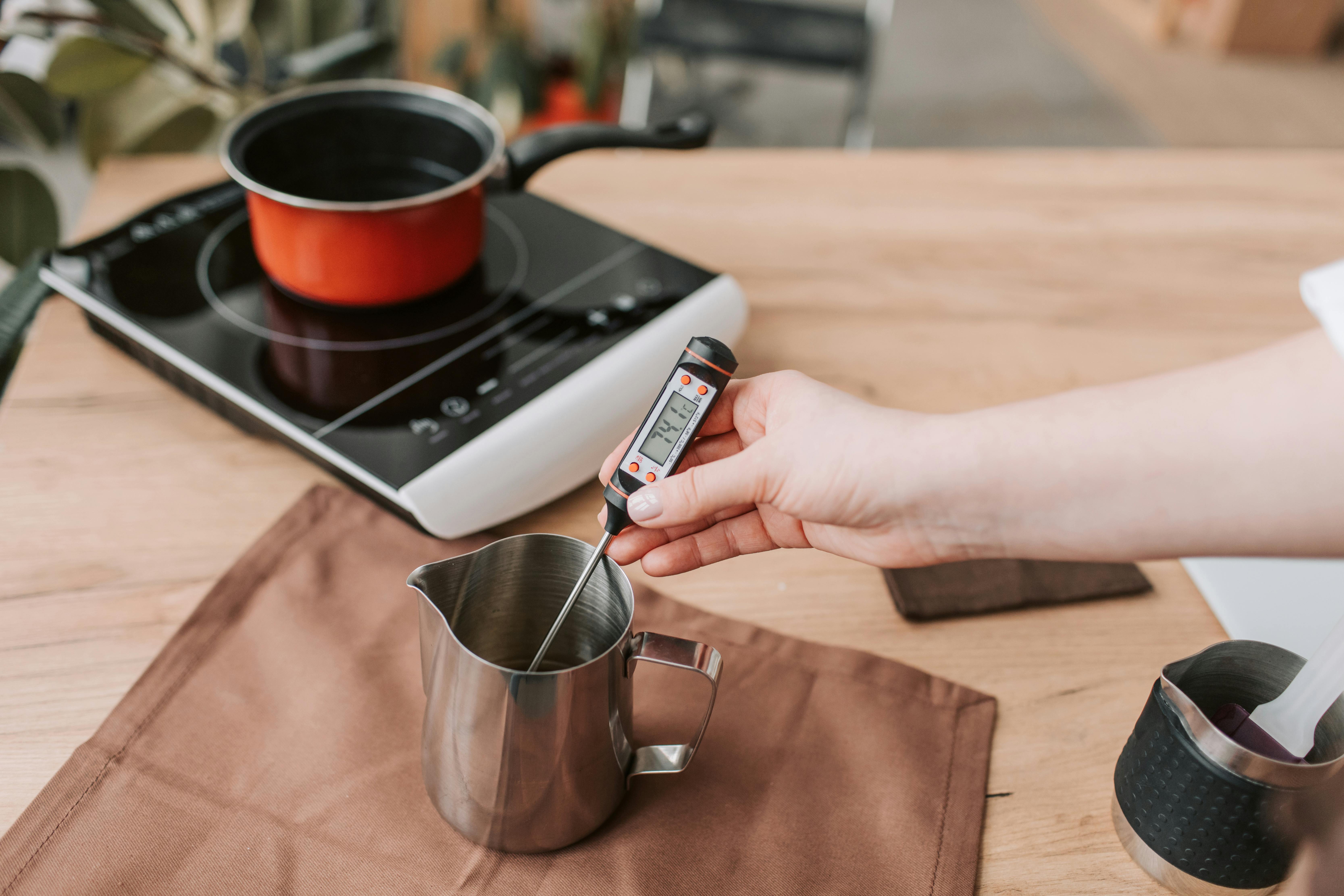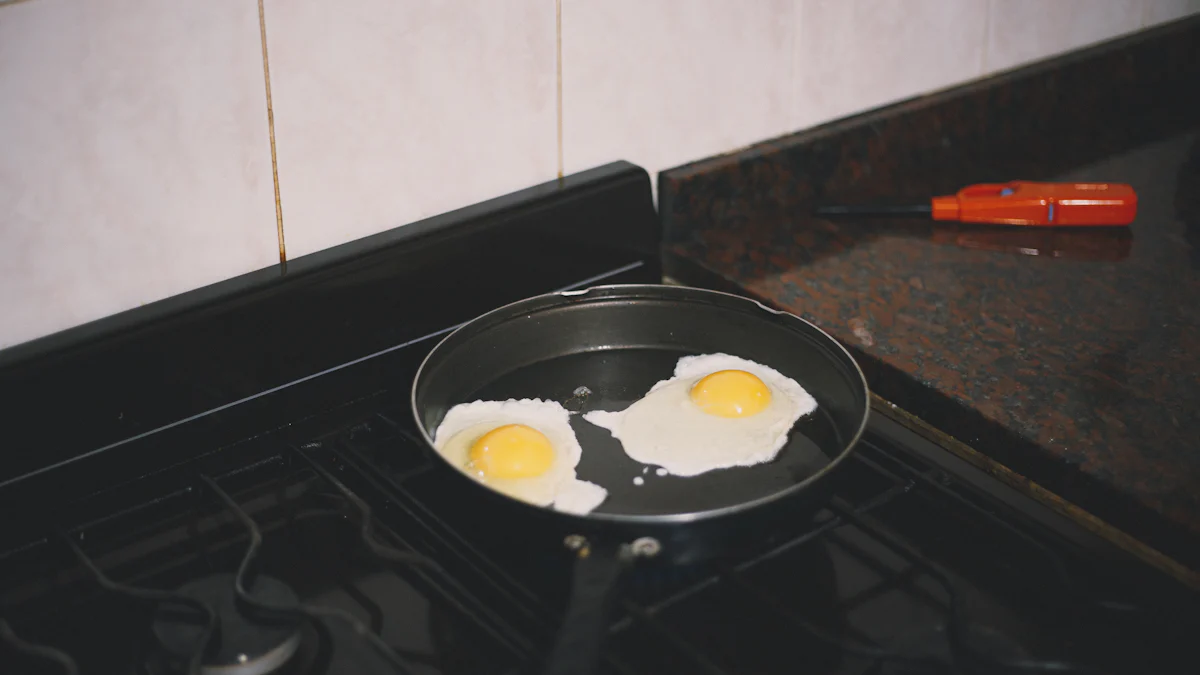Portable Induction Cooktops vs Traditional Cooktops: Which is Right for You?

Choosing between an induction cooktop portable and a traditional cooktop can feel like a big decision. Each option offers unique benefits that cater to different cooking styles and needs. Induction cooktops, for instance, boast an impressive efficiency rate of about 85%, making them a popular choice for those focused on energy savings. They heat pots directly, which means less wasted energy compared to traditional gas cooktops, which only reach about 35% efficiency. With the growing interest in sustainability, many home cooks are considering an induction cooktop portable for their next kitchen upgrade. Whether you value portability, speed, or energy efficiency, understanding these differences will help you make the right choice.
Key Takeaways
Induction cooktops are highly energy-efficient, converting up to 90% of energy into heat, which can lead to lower utility bills over time.
While induction cooktops may have a higher initial purchase price, their long-term savings on energy costs can make them a wise investment.
The portability of induction cooktops allows for easy setup and use in various locations, making them ideal for those who enjoy cooking outdoors or in small spaces.
Induction cooktops offer precise temperature control and faster cooking times, allowing you to prepare meals more efficiently.
Safety features of induction cooktops, such as cool surfaces and automatic shut-off, make them a safer option for families, especially with young children.
Traditional cooktops provide versatility in cookware options, allowing you to use a wider range of materials without compatibility concerns.
Consider your cooking habits and priorities—whether you value energy efficiency and speed or versatility and lower upfront costs—when choosing between induction and traditional cooktops.
Cost Comparison
When deciding between portable induction cooktops and traditional cooktops, understanding the cost implications is crucial. Let's break down the costs into two main categories: initial purchase price and long-term operating costs.
Initial Purchase Price
The initial purchase price can significantly influence your decision. Induction cooktops tend to have a higher upfront cost compared to traditional electric cooktops. This is due to the advanced technology that induction cooktops use, which allows them to heat pots and pans directly. However, recent trends show that prices for induction cooktops have been decreasing, making them more accessible to a broader audience.
On the other hand, traditional electric cooktops generally come with a lower price tag. They are often seen as a budget-friendly option for those who want a reliable cooking appliance without breaking the bank. If you're considering a gas cooktop, keep in mind that while they might be less expensive initially, they may not offer the same energy efficiency as induction models.
Long-term Operating Costs
Long-term operating costs are another important factor to consider. Induction cooktops are known for their superior energy efficiency. They convert about 85% of the energy they use into heat, which means less wasted energy and potentially lower utility bills over time. This efficiency can lead to significant savings, especially if you cook frequently.
In contrast, traditional electric cooktops are less efficient, with only about 65% of the energy being used effectively. Gas cooktops, while popular for their cooking performance, are even less efficient, converting only about 35% of their energy into heat. This difference in energy efficiency can impact your monthly expenses, making induction cooktops a more economical choice in the long run.
When comparing induction vs electric cooktops, it's clear that while the initial price might be higher for induction models, the long-term savings on energy costs can make them a wise investment. Consider your cooking habits and energy priorities when making your decision.
Efficiency and Performance
When it comes to efficiency and performance, induction cooktops stand out as a top choice for many home cooks. They offer a unique blend of energy savings and precise cooking capabilities that traditional electric cooktops often struggle to match.
Energy Efficiency of Induction Cooktops
Induction cooktops are renowned for their impressive energy efficiency. Unlike traditional electric cooktops, which convert only about 65% of the energy they use into heat, induction cooktops can convert up to 90% of their energy directly into the cookware. This means less wasted energy and more savings on your utility bills. In fact, studies show that induction cooking can save you between 5% to 20% in energy costs compared to traditional electric options and more than 65% compared to gas cooktops.
The secret behind this efficiency lies in the way induction cooktops operate. They use electromagnetic energy to heat pots and pans directly, ensuring that the heat goes exactly where it's needed. This method not only reduces energy consumption but also lowers greenhouse gas emissions, making induction cooktops an environmentally friendly choice.
Cooking Speed and Precision
If you value speed and precision in your cooking, induction cooktops won't disappoint. They heat cookware directly, allowing them to reach higher temperatures faster than both electric and gas stoves. For instance, induction stoves can boil water 25-50% faster than their traditional counterparts. This rapid heating capability means you spend less time waiting for your pots to heat up and more time enjoying your meals.
Moreover, induction cooktops offer precise temperature control, which is a game-changer for many recipes. Whether you're simmering a delicate sauce or searing a steak, you can adjust the heat with remarkable accuracy. This level of control enhances your cooking performance, allowing you to achieve perfect results every time.
Ease of Use

When it comes to ease of use, the induction cooktop portable shines with its user-friendly features and design. Let's explore how its setup and portability, along with its intuitive user interface and controls, make it a convenient choice for any kitchen.
Setup and Portability of Induction Cooktop Portable
Setting up an induction cooktop portable is a breeze. You don't need any special installation or complex wiring. Just plug it into a standard outlet, and you're ready to cook. This simplicity makes it perfect for those who move frequently or enjoy cooking in different locations, like outdoor spaces or small apartments.
The portable nature of these cooktops is a game-changer. You can easily store them when not in use, freeing up valuable counter space. Their lightweight design means you can take them anywhere, whether it's a family gathering or a camping trip. This flexibility allows you to enjoy the benefits of induction cooking wherever you go.
User Interface and Controls
The user interface of a portable induction cooktop is designed with simplicity in mind. Most models feature a digital display that shows temperature settings and cooking modes. This clear display helps you keep track of your cooking progress without any guesswork.
You'll find that the controls are intuitive and easy to navigate. With just a few buttons, you can adjust the heat level, set timers, and switch between cooking modes. This straightforward approach gives you better control over your cooking, allowing you to focus on creating delicious meals.
Many users appreciate the specific features of the user interface, such as touch-sensitive controls and preset cooking programs. These features enhance the cooking experience by providing precise adjustments and convenience. If you ever face challenges with the controls, there are plenty of support resources available to help you out.
Safety Features

When it comes to safety, induction cooktops offer several advantages that make them a top choice for many households. Let's dive into the specific safety features that set them apart.
Heat Control and Surface Safety
Induction cooktops excel in heat control and surface safety. Unlike traditional cooktops, induction models only generate heat when a compatible pan is in place. This means the cooktop surface remains relatively cool, reducing the risk of burns. You won't have to worry about accidentally touching a hot surface after cooking. The electromagnetic technology used in induction cooktops ensures that heat is directed solely to the cookware, leaving the surrounding area safe to touch.
Various Experts in kitchen appliance safety highlight that "induction cooktops offer the safest form of cooktop heating, without compromising on heat capabilities." This makes them an excellent choice for families with young children or anyone concerned about kitchen safety.
Child Safety and Automatic Shut-off
Induction cooktops also prioritize child safety. The absence of open flames or exposed heating elements makes them inherently safer than gas or electric cooktops. If you have curious little ones at home, you'll appreciate this feature. Additionally, many induction cooktops come equipped with automatic shut-off functions. This means if you forget to turn off the cooktop, it will do so automatically after a certain period of inactivity, providing peace of mind.
According to Various Experts, "induction cooktops are extremely safe because there's no open flame or exposed heating element as compared to gas or electric." This safety aspect is particularly beneficial for families with small kids who might get too close to the stove.
Compatibility with Cookware

Induction-specific Cookware Requirements
When you choose an induction cooktop, you need to consider the type of cookware you'll use. Not all pots and pans work with induction technology. For your induction cooktop to function properly, your cookware must be magnetic. This means it should have a high iron content. Materials like stainless steel, cast iron, or enameled cast iron are ideal. You can easily test your existing cookware by seeing if a magnet sticks to the bottom. If it does, you're good to go!
Induction cooktops also require cookware with a flat bottom. This ensures even heat distribution and efficient cooking. If your cookware isn't induction-compatible, the cooktop's safety features might kick in and turn off the heat. This prevents any mishaps and ensures your cooking experience remains smooth and safe.
Versatility of Traditional Cooktops
Traditional cooktops offer more flexibility when it comes to cookware. You can use a wide range of materials, including copper, aluminum, ceramic, and glass. These cooktops don't rely on magnetic properties, so you have more freedom in choosing your pots and pans. This versatility can be a significant advantage if you have a diverse collection of cookware.
With traditional cooktops, you don't need to worry about specific requirements. Whether you're using a vintage copper pot or a modern non-stick pan, you can cook without any compatibility concerns. This makes traditional cooktops a convenient choice for those who prefer not to invest in new cookware.
Maintenance and Durability

Cleaning and Upkeep
Keeping your cooktop clean can feel like a chore, but it doesn't have to be. With induction cooktops, you get an easy-to-clean surface. The cooktop stays cool, so spills don't burn onto the surface. You can simply wipe it down with a damp cloth after cooking. This feature makes cleaning quick and hassle-free.
Traditional cooktops, on the other hand, might require a bit more elbow grease. Food can get stuck in the grates or around the burners. You might need special cleaners or tools to get into those nooks and crannies. Regular cleaning helps maintain the cooktop's appearance and performance.
Longevity and Repair Needs
When it comes to durability, both induction and traditional cooktops have their strengths. Induction cooktops often come with fewer moving parts, which means less wear and tear over time. This can translate to a longer lifespan with fewer repairs needed. However, if something does go wrong, repairs might be more costly due to the advanced technology involved.
Traditional cooktops, whether gas or electric, have been around for a long time. They are generally robust and can last many years with proper care. Repairs might be more straightforward and less expensive compared to induction models. However, regular maintenance is key to ensuring they continue to function well.
Incorporating user feedback into product design can enhance durability and ease of maintenance. Users often provide valuable insights into what works and what doesn't. By listening to their experiences, manufacturers can refine their products to better meet user needs. This continuous feedback loop helps improve product longevity and user satisfaction.
Choosing between portable induction cooktops and traditional cooktops depends on your cooking style and priorities. If energy efficiency and speed are your top reasons to buy an induction cooktop, then the induction option is a great fit. It offers precise temperature control and safety features that make cooking a breeze. On the other hand, if you value versatility in cookware and a lower initial cost, traditional cooktops might suit you better. Consider your kitchen needs and lifestyle to make the best choice. Remember, understanding your reasons to buy an induction cooktop can guide you toward the right decision.
FAQ
What are the main differences between induction and traditional cooktops?
Induction cooktops use electromagnetic energy to heat pots and pans directly. This method makes them more energy-efficient compared to traditional cooktops. Traditional cooktops, like gas and electric, heat the surface first, which then transfers heat to the cookware. This process can lead to more energy waste. Induction cooktops also offer faster cooking times and precise temperature control.
Do induction cooktops require special cookware?
Yes, induction cooktops need cookware with magnetic properties. You should use pots and pans made of stainless steel or cast iron. To check if your cookware is compatible, see if a magnet sticks to the bottom. If it does, you can use it on an induction cooktop.
Are induction cooktops safe to use?
Induction cooktops are very safe. They only generate heat when a compatible pan is on the surface. This means the cooktop stays cool to the touch, reducing the risk of burns. Many models also have automatic shut-off features for added safety.
How do I clean an induction cooktop?
Cleaning an induction cooktop is simple. Since the surface stays cool, spills don't burn onto it. You can wipe it down with a damp cloth after cooking. For stubborn stains, use a mild cleaner and a soft cloth. Avoid abrasive materials that might scratch the surface.
Can I use an induction cooktop outdoors?
Yes, you can use a portable induction cooktop outdoors. Its lightweight design makes it easy to transport. Just ensure you have access to a power outlet. It's perfect for outdoor cooking events like barbecues or camping trips.
How do induction cooktops affect my energy bills?
Induction cooktops are energy-efficient. They convert up to 90% of the energy they use into heat. This efficiency can lower your energy bills over time, especially if you cook often. Traditional cooktops, like gas and electric, are less efficient and may lead to higher energy costs.
Are induction cooktops more expensive than traditional ones?
Induction cooktops often have a higher initial cost due to their advanced technology. However, prices have been decreasing, making them more accessible. While the upfront cost might be higher, the long-term savings on energy bills can make them a cost-effective choice.
Can I use any type of cookware on traditional cooktops?
Yes, traditional cooktops are versatile. You can use a wide range of cookware materials, including copper, aluminum, and glass. Unlike induction cooktops, traditional ones don't require magnetic properties in the cookware.
How long do induction cooktops last?
Induction cooktops are durable and can last many years with proper care. They have fewer moving parts, which means less wear and tear. Regular cleaning and following the manufacturer's guidelines can extend their lifespan.
What should I consider when choosing between induction and traditional cooktops?
Consider your cooking habits and priorities. If you value energy efficiency and precise temperature control, an induction cooktop might be right for you. If you prefer versatility in cookware and a lower initial cost, a traditional cooktop could be a better fit. Think about your kitchen needs and lifestyle to make the best choice.
See Also
Should You Choose a Built-in Induction Cooktop?
Enhance Your Culinary Skills Using Portable Induction Cooktops
Finding the Perfect Countertop Induction Burner for You
Key Advice for Using Portable Induction Cooktops Effectively

